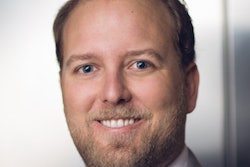
The largest expense for a dental practice, besides employees and staffing, is routinely the cost associated with the office real estate. That's true whether you lease or own the office space. This series focuses on the common traps and negotiating points in offices leases that most dental practices fail to consider when negotiating their lease. Some of these traps have even cost dentists hundreds of thousands of dollars and put dentists in danger of losing their practice. In this column, Matt LaMaster discusses what goes into the discussion of rent.
 Matt LaMaster, Esq., is the founder and principal attorney of the LaMaster Law Firm.
Matt LaMaster, Esq., is the founder and principal attorney of the LaMaster Law Firm.A tenant's duty to pay rent is one of the most obvious obligations in a lease and the one that most tenants tend to concentrate their attention on. It is also the rent provisions that are most near and dear to the heart of the landlord, for that is how the landlord makes money. Accordingly, it is important that tenants understand how their rent is calculated and what is included, or not included, in that payment.
As a starting point, most commercial leases for dental offices fall into two main categories based on how the rent is to be determined: gross lease or net lease. A gross lease is the simplest to determine the rental rate, as the rent is a specific amount and no other payments are generally expected to be made by the tenant. For example, the rent rate per square foot is $20.
A net lease provides that the landlord transfers various expenses to the tenant through what is oftentimes entitled "additional rent." Those expenses generally include the tenant's pro rata share of operating expenses, which can include a share of the following:
- Real estate taxes
- Common area maintenance expenses
- Insurance expenses of the landlord
These three additional expenses are the reason for the name "triple-net lease." For example, the rent rate per square foot for a net lease may be $20, but there will be additional periodic payments to the landlord.
Today, most landlords use a triple-net lease. However, regardless of the lease type, smart landlords will pass their expenses onto their tenants in a gross lease also. In the case of a gross lease, you may not see the expenses broken out as in a net lease, because they are rolled in with the base rental rate. So, when you're comparing a gross-lease rental rate with a net-lease rental rate, the price for the net lease may seem lower, but you need to remember to add the additional rent payments.
Market rate
That brings us to the next item, rent rate per square foot. However, as you now know, the first thing to look for is whether the lease is a gross lease or net lease. The second item you need to be concerned about is the market rate. That seems obvious, but some dentists just don't know what the true market rate is for the area.
An important aspect of the square-foot rental rate is the calculation of the leased space. First, you must understand the difference between rentable and usable square footage. The usable space is the area actually located within the four walls of the premises and that which is able to be used for the practice of dentistry.
The rentable space, on the other hand, may include portions of the common areas, such as hallways, entrance areas, bathrooms, and utility areas. For example, your dental office may be 2,800 sq ft with four or five operatories, but your rentable square footage, which is being used to calculate your rent, is actually 3,000 sq ft.
Rentable square feet is significantly different than usable square feet, particularly in office buildings with common areas. I've seen landlords improperly calculate the space. Ask the landlord for the site plan and that should show the square footage.
So, if you are building out the space, it's important that your architect provides you with the correct dimensions. The bottom line is that you need to ensure that the leased space is clearly defined and that you understand what you are paying for.
Additional costs
An additional and often overlooked issue by tenants in the lease occurs when tenants end up paying for costs that aren't core to the operating of the building or that extend beyond the life of their lease. For example, in new buildings, a landlord may try to pass the cost of the water and sewer hookup to the tenant. These costs can run into the tens of thousands of dollars in some cases.
“In new buildings, a landlord may try to pass the cost of the water and sewer hookup to the tenant.”
Some leases may allow a landlord to put a new roof on the building and charge the entire cost of the roof under operating expenses in a single year as additional rent, even though a roof is a structural element that can have a life span of 25 to 30 years. At the very least, expenses associated with capital expenditures such as tap fees and the replacement of a roof should be spread out over a number of years, with charges stopping at the lease's expiration.
When comparing locations, you need to consider the type of lease, the manner in which the landlord calculates your rent, and whether you are obligate to pay any additional expenses. Make sure that you are getting a fair market rate for the area and that the calculation for determining base rent is well-defined. Also, don't forget to consider that "free rent" periods oftentimes do not extend to operating expenses and additional costs.
Remember, leases are negotiated documents that represent the written culmination of a negotiated transaction. These "nuggets" of information in this part of the series are just the tip of the iceberg for you and your lease. Stay tuned for the next part when we discuss maintenance obligations of the tenant and landlord.
Matt LaMaster, Esq., is the founder and principal attorney of the LaMaster Law Firm, which is committed to delivering legal services to dental professionals and their practices. For more information about dental-specific legal services, visit www.lamasterlaw.com.
This article includes information about legal issues. Such materials are for informational purposes only and may not reflect the law in your jurisdiction. These informational materials are not intended and should not be taken as legal advice on any particular set of facts or circumstances. You should contact an attorney for advice on specific legal problems.
The comments and observations expressed herein do not necessarily reflect the opinions of DrBicuspid.com, nor should they be construed as an endorsement or admonishment of any particular idea, vendor, or organization.



















